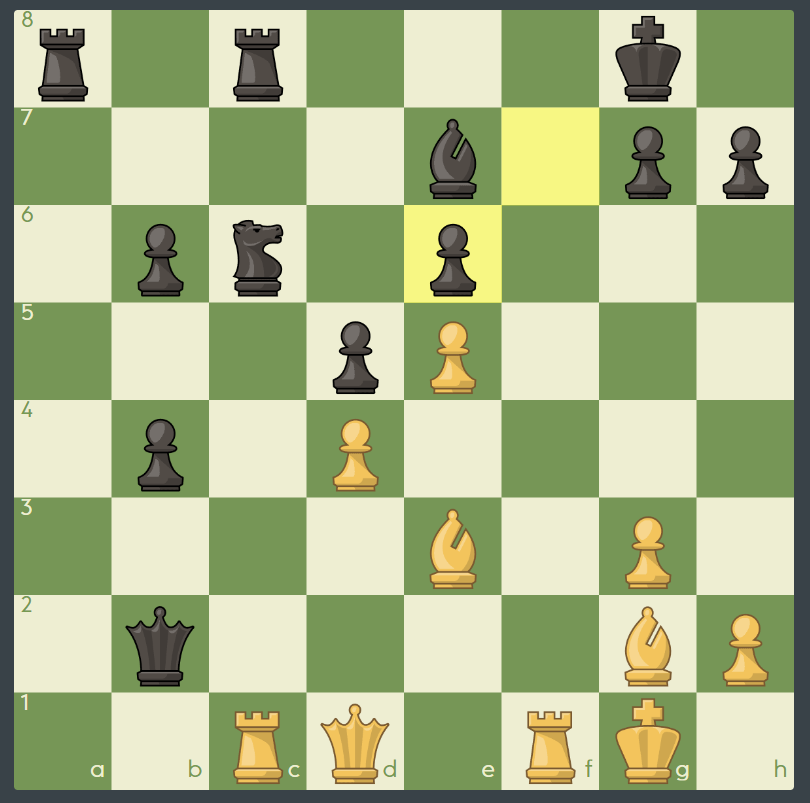BRING YOUR VISION INTO ACTION
Black’s central pawn chain on d6 and e5 points to the proper direction of attack–the kingside! How can Black clear the way for a space-gaining pawn advance over there?

Excellent! Black should attack on the kingside, where the d6-and e5-pawns point. To do so, Black needs to clear the way for the f-pawn’s advance. This is the best square to move the knight — it supports the other knight in controlling key squares such as b6 and c5.

White tries to attack on the queenside, but everything is covered. White has many other moves, but after all of them, Black has a solid position and will expand on the kingside.
————————————–
Black already correctly identified the opportunity to play on the kingside by looking at where the pawns pointed. Can you find the right move to continue expanding on the kingside?

Excellent move! This move begins a promising attack on the kingside. If one compares this position to our starting position, it is clear that Black is making progress. In the game, Black soon swung both rooks and the minor pieces to the kingside and began unrelenting pressure. Note that Black has no fear of 3.exf5 gxf5 when the strong f and e-pawns give Black good play.

The best way to begin an attack is often to advance the pawn NEXT to your most advanced pawn. How can White do that here?

Excellent. With this move, White begins a strong kingside attack. The pawn will advance further and weaken Black’s kingside pawn structure while activating the rook.

White chose to start the attack without bothering to defend this pawn. Black takes up the challenge and captures the pawn, but it may have been better to slow White’s attack down with 1…g6.
————————————–
Black grabbed the pawn and is making progress on the queenside, but our attack is more promising because we are attacking in the direction of the black king. How can White follow through on the previous advance?

Great! Remember this idea. “Advance the pawn NEXT to your most advanced pawn.” The f-pawn’s advance puts pressure on the e6-pawn, activates the f1-rook, and may threaten 3.f6.

Black tries to ignore the White attack. Black needed to eliminate the f5-pawn with 2…exf5, but White would then get the half-open f-file for the rook and would be able to attack the weak pawns on f7 and d5.
————————————–
Greedy pawn-grabbing such as 2…Qxb2 demands to be punished. What’s the best way for White to activate the rook on f1 and create a weak pawn in Black’s camp?

Very well done! Other moves, such as 3.Qg4, are also strong, but this is the most direct way to break through. Black will struggle to defend the pawn on e6.

Of course, recapturing is Black’s only reasonable move.
————————————–
White has opened lines on the kingside and is ready to create threats. How can White swing the most powerful piece into action and attack e6?

Excellent! As it turns out, White is winning here. Black can only defend the pawn on e6 with 4…Nd8. After that, White can win in three ways. White can play 5.Bh6!, 5.Rxc8 (followed by Bxd5) or the immediate 5.Bxd5. Black’s major pieces are simply looking on from the queenside as the castle crumbles.


